Log in or create new account to save this product to your wishlist.
The Ultimate Guide to Indoor Gardening
Developing an indoor gardening can transform your home into a thriving oasis of calm. Find out how with our top tips.
Latest articles
7 MIN 22 Jul How to keep your lawn in shape this summer 9 MIN 15 Jul Watering Your Garden: 10 Top Tips! 11 MIN 15 Jul Is Your Grass Type Right for your Garden? 11 MIN 10 Sep Create Your Low-Maintenance Garden – Tips and Ideas 11 MIN 08 Sep The Ultimate Guide to Choosing the Perfect Hedges for Your Garden 12 MIN 30 Aug The Top 20 Evergreen Climbers to Transform Your GardenLooking to explore the world of indoor gardening? You’ve come to the right place! Whether you’re a novice gardener looking to get started or have experienced green fingers, this ultimate guide to indoor gardening is here to help.
- Essential Equipment for Indoor Gardening
- Choosing the Right Plants for Indoor Gardening
- Tips and Tricks for Indoor Gardening
- The Benefits of Indoor Gardening
- Common Challenges in Indoor Gardening
- How to Keep Your Indoor Garden Thriving
From helpful tips and tricks to essential equipment and advice on choosing the right plants, this comprehensive guide will show you all you need to know to bring the outdoors in and create a stunning indoor garden.
And with a bit of patience and knowledge, you’ll be able to create your own green oasis in no time.
Ready? Let’s get started!
Essential Equipment for Indoor Gardening
Before you even think about planting your first seed, you’ll need a basic understanding of the tools and equipment used in indoor gardening.
Below, we’ll take a look at some of the most essential indoor gardening tools, exploring how they can help you achieve the perfect indoor garden.
Transplanting Pot
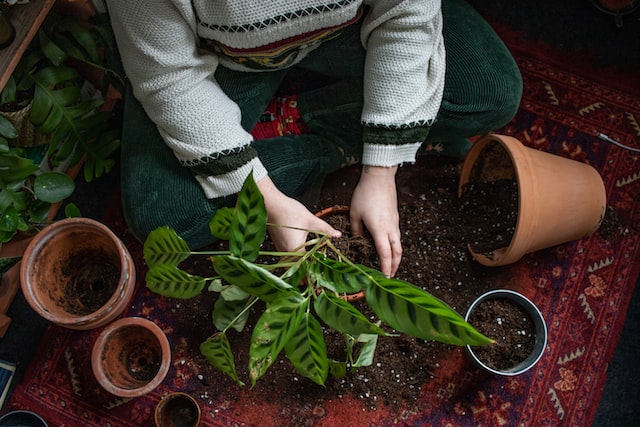
Transplanting is the process of moving an existing, healthy plant from its current pot to a larger one. You might notice that a once-healthy-looking plant has started to look a little lacklustre — slide the pot off the plant and look at the root ball.
If the roots are escaping through the bottom drainage holes or the root ball has formed into the shape of the pot, your plant will benefit from re-potting.
Transplanting pots, therefore, are an essential indoor gardening asset. They’re great for planting delicate seedlings, moving mature plants, and re-potting your plants as they grow.
When choosing a transplanting pot, look for a container with plenty of drainage holes; large enough to fit the plant’s roots with plenty of space to spare.
Potting Mix
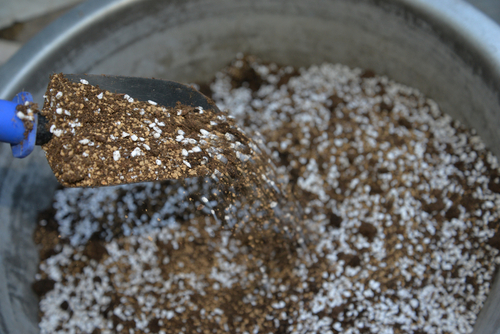
Every indoor garden needs a good potting mix, providing the ideal environment for your plants to grow and thrive.
Most houseplants thrive in general potting compost, so choose a high-quality potting mix specifically designed for indoor gardening. Good potting soil drains quickly — a perlite mix is perfect as it allows air and water to reach your plant’s roots.
Outdoor soil is likely too heavy for indoor plants — so always invest in good quality indoor gardening compost.
Watering Can
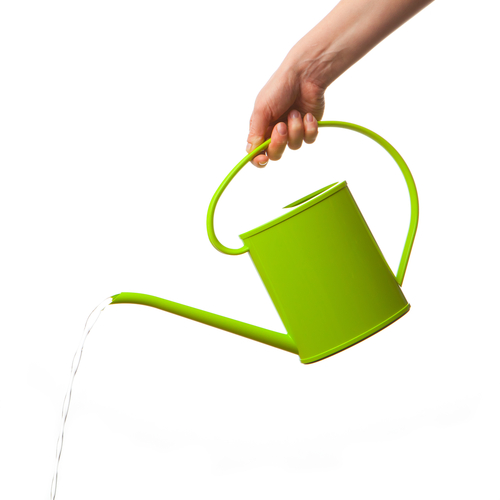
How often have you spilt water down the back of the TV or on top of the stereo? Sure, a glass or a milk bottle is suitable for the kitchen, but it’s not always the best receptacle for watering your plants.
Get yourself a small watering can with a long spout — this gives you plenty of manoeuvrability and prevents accidental spillages while watering your plants.
Pruning Shears
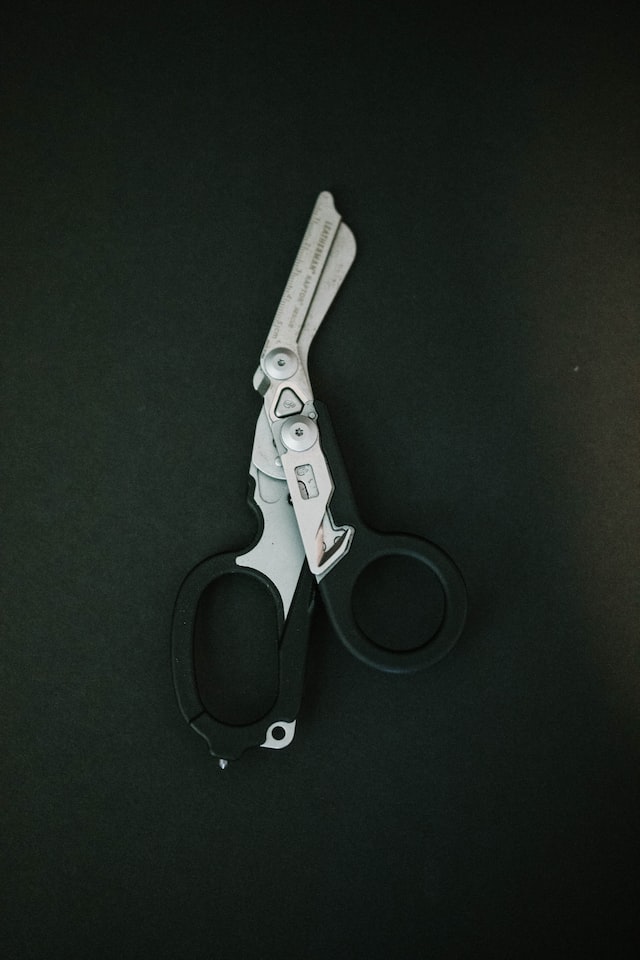
We associate pruning with fruit trees and bushes, but actually, houseplants need fairly regular pruning and pinching off to keep the plant healthy and producing flowers.
Some plants become woody or leggy when left to their own devices, so it’s worth cutting off dead leaves and branches — it helps your plant focus its energy on growing rather than maintaining unhealthy limbs.
Grow Light
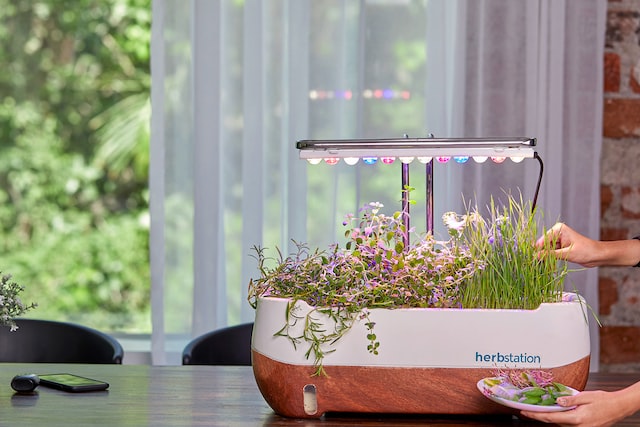
Not all rooms in the house have good access to sunlight, but that doesn’t necessarily mean you have to stick to shade-loving plants.
A grow light is a must-have indoor gardening tool, especially if you’re thinking of cultivating indoor tomato or chilli plants.
Choose a Full Spectrum LED grow light — these require very little energy but provide your plants with everything they need to photosynthesise successfully.
Choosing the Right Plants for Indoor Gardening
When choosing plants for indoor gardening, you’ll want to select plants ideal for indoor environments. And while many outdoor plants will thrive indoors, others will not.
To ensure you choose the right plants for indoor gardening, keep the following tips in mind:
Brightness
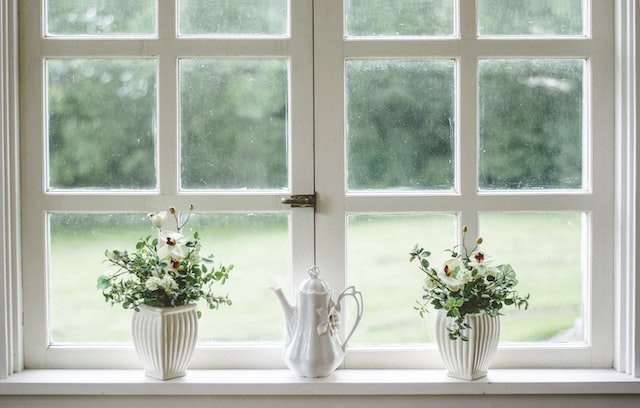
The first thing you’ll want to consider when choosing plants for indoor gardening is the amount of daylight you receive in your indoor space. If your indoor space lacks natural light, you’ll need to consider plants that can thrive in low-light environments.
Some of the best low-light plants include:
- Chamaedora — a palm-like plant with excellent low-light resilience
- Dragon tree
- Japanese Sago Palm
- Spider plant — just make sure you provide enough water — but they’ll thrive in low-light
- Weeping fig tree
- Heart-leaf philodendron — aka the sweetheart plant
- Devil’s Ivy — beautiful trailing speckled leaves
- Chinese evergreen — literally unkillable
- Snake plant
- Mostera — for that tropical look!
Watering Needs
If you’re anything like me, it’s easy to forget to water your plants. And while most houseplants let you know when they’re thirsty (they go limp and dull; they don’t phone you!), some plants can appear OK until you check their soil.
On the other hand, the other most significant cause of dead houseplants is overwatering. If the tips of the leave appear to be dying, your plant is usually telling you that you’re overwatering — but most of us would interpret this as a sign of underwatering.
If you’re not worried about getting your hands dirty (and, let’s face it, you don’t have green fingers if you are), then do the “finger test”.
Simply press your finger into the top 5cm of soil — if you feel moisture, leave it for another couple of days; if it feels dry, give it some water.
You should let some plants, such as orchids, dry out altogether, and give them a good soaking once a week instead. Make sure that orchid roots don’t sit in a pool of water — they’ll rot.
Be sure to read the label when you buy your houseplants — and make sure you know exactly how much attention the plant will require.
Plant Size for an Indoor Garden
Finally, you’ll want to consider the potential size of the full-grown plant. Some plants, such as cheese plants and spider plants, can grow huge if you give them large enough pots. Consider whether you have enough room for the adult plant.
Tips and Tricks for Indoor Gardening
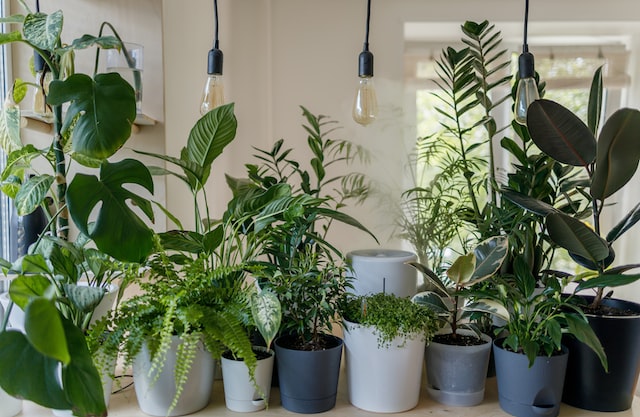
If you’re an experienced outdoor gardener, you’ll probably pick up indoor gardening with ease. However, there are some considerations to bear in mind:
Find Your Perfect Growing Location
Choose the spot in your home that suits the plant (not the other way around). Find an area with plenty of sunlight and a suitable indoor temperature to grow your indoor garden.
However:
Some plants hate direct sunlight, so do some research before you stick your orchid on your sunny windowsill.
The following plants can tolerate sunny windowsills:
- Jade plants (aka money plants)
- Aloe Vera
- Mother-in-law’s tongue (aka snake plant)
- Croton
- String of Pearls
- Kalanchoe
- Cacti
- Yucca
- Hibiscus
Be Organised and Don’t Forget to Water
Indoor plants are likely to need watering more often than outdoor plants (because it shouldn’t be raining inside your house — find a good plumber if it is!).
However, as mentioned, it’s best to avoid overwatering. Most houseplants are fine with once-a-week watering — look for signs of wilting, which is your plant’s way of telling you it’s thirsty.
But what do you do when you go on holiday?
Depending on the duration of your vacation, most houseplants will probably be OK for at least a week without water, especially if you leave the heating off.
Move houseplants away from direct sunlight when you’re going on holiday — they’ll dry out too quickly. And remember to water just before you leave.
If you’re concerned that your plants will die left to their own devices, stick a large, soaked bath towel across the bottom of your bath and place exposed plant pots over the wet towel. Make sure the draining holes are exposed to the wet towel — remove external decorative pots.
The Benefits of Indoor Gardening

There are several benefits to indoor gardening, including being able to grow a wider variety of plants, having complete control over your indoor environment, and growing plants all year round, regardless of the outdoor climate.
Grow a wider variety of plants
Growing plants indoors gives you plenty of choice — you can even opt for tropical plants that need lots of heat and moisture.
Tropical plants are especially suited to the bathroom because they often need high humidity as well as direct watering.
The following plants are ideal for the bathroom:
- Devil’s Ivy (Golden Pothos)
- Majesty Palm
- The Claude (Pilea Perperomioides)
- Aloe
- English trailing ivy
- Air plants
- Bamboo
- Spider plants
- Birds Nest Fern
- Peace lily
- White orchid
- Asparagus fern — especially asparagus sprengeri
Growing plants year-round
Indoor gardening is a year-round activity. And while we get less daylight in the home during the winter, the indoor temperature will help most houseplants survive all year round.
This is especially useful if you’re growing indoor veg or herbs under a grow light, as you can enjoy fresh, homegrown produce at any time of the year.
Common Challenges in Indoor Gardening
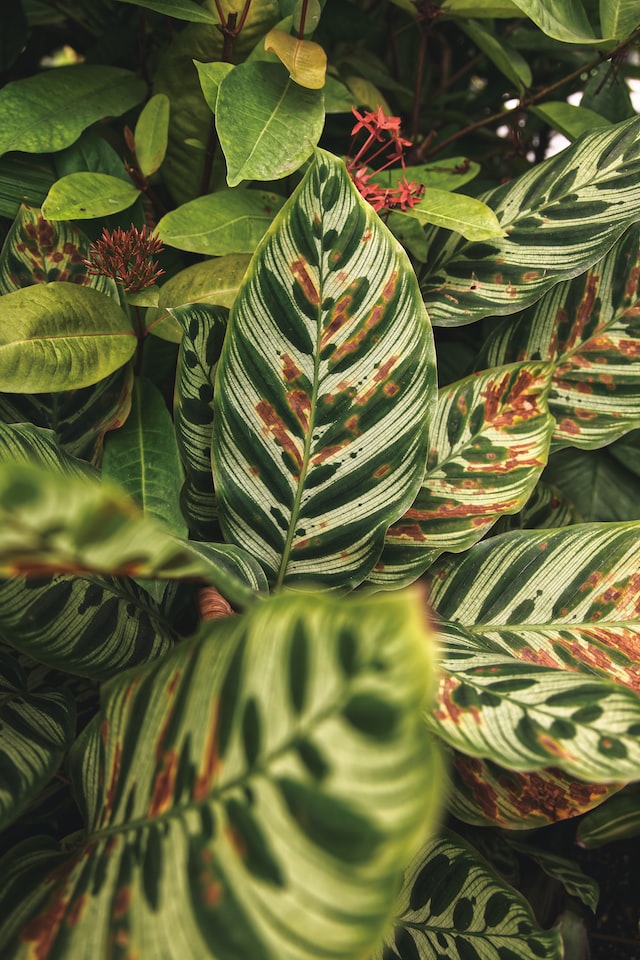
Here are some of the most common challenges in indoor gardening and how to overcome them.
Controlling pests and diseases
Pests can hamper plants’ outdoor growth, of course, but one of the most common challenges in indoor gardening is controlling pests and diseases.
The most common indoor plant pests are aphids, mealybugs, soft scales, whiteflies, and fungus gnats, while the most common diseases affecting indoor plants are leaf spot fungus, powdery mildew, and root rot.
Luckily, there are many ways you can prevent pests and keep them out of your indoor garden.
Maintain good airflow
Good airflow helps prevent fungus and most indoor plant pests. All plants need plenty of air flowing through their leaves, so keep your indoor garden well-ventilated to prevent problems.
Lack of sunlight
The darker the room, the more likely water sitting on leaves will turn to mould or fungus. So, water directly onto the soil rather than the leaves and ensure good access to light.
If your indoor garden doesn’t receive enough sunlight, your plants may grow poorly or even die.
How to Keep Your Indoor Garden Thriving
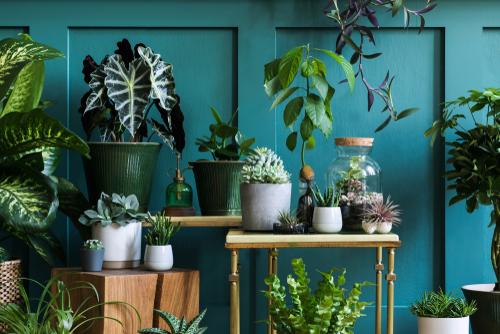
Now that you’ve created the perfect indoor garden, how can you keep it thriving? Here are a couple of tips to help you maintain your indoor garden and keep it thriving.
Regularly check your indoor garden
Regularly check your indoor garden for pests, diseases, and other potential problems. Look for ominous signs such as discoloured or wilting leaves and brown spots.
Yellowing or scorched leaves could result from too much sun, so it’s worth moving ill-looking plants out of direct sunlight if the weather is sweltering and sunny.
Do you have any questions?
We hope we’ve given you many valuable tips and hacks for your perfect indoor gardening experience. But if you have any questions, don’t hesitate to get in touch.
And check the garden tools section on our website – we’re going to be adding new products ideal for indoor gardening very soon!
Thanks for reading!
Leave a comment
Your answer will be displayed on the site and the interested party will be notified by email.
Leave a comment
Have a question or want to share your experience? Leave us a comment.
Read more
The best tips and tricks for a lush green lawn
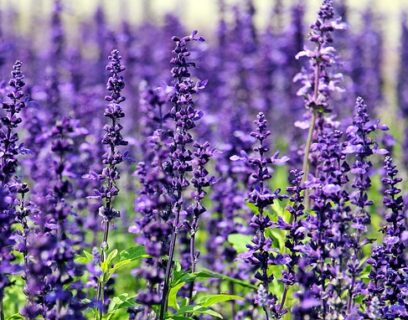 7 MIN
13 Sep
Lavender Cuttings: a step-by-step guide
7 MIN
13 Sep
Lavender Cuttings: a step-by-step guide
 11 MIN
10 Sep
Create Your Low-Maintenance Garden – Tips and Ideas
11 MIN
10 Sep
Create Your Low-Maintenance Garden – Tips and Ideas
 Scarifying Kit
All products after scarifying | Quickly restores the lawn after scarifying | Outsmart weeds quickly with the use of this kit
From: € 39.99
Scarifying Kit
All products after scarifying | Quickly restores the lawn after scarifying | Outsmart weeds quickly with the use of this kit
From: € 39.99
 Spring Lawn Care Kit
MOOWY’s choice for the spring | Quick recovery of your lawn after winter | A strong lawn prevents weeds
From: € 25.99
Spring Lawn Care Kit
MOOWY’s choice for the spring | Quick recovery of your lawn after winter | A strong lawn prevents weeds
From: € 25.99
 Long Lasting Lawn Fertiliser
Effective for 90 days | See results in 14 days! | Suitable for all types of grass and soil
From: € 13.99
Long Lasting Lawn Fertiliser
Effective for 90 days | See results in 14 days! | Suitable for all types of grass and soil
From: € 13.99
Do you want a lawn calendar?
🌱 All important maintenance moments for your lawn during the year. Leave your email and we will send you the lawn calendar for free.
Enter your email
Receive the lawn calendar in the mail
Enjoy a green lawn all year round!











Comments (0)
There are no comments yet. Well then, what are you waiting for to
Be the first to write your comment!inaugurate this pretty page?
Do you have some comments?